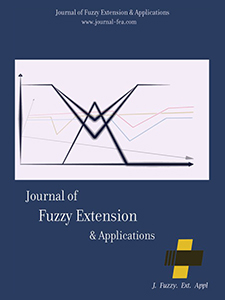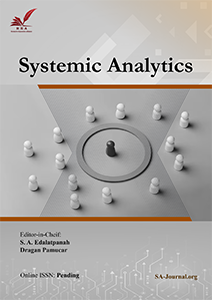Analysis of Importance-Performance of Scenarios for Improving Patient length of stay in the Operating Room
Keywords:
Patient's length of stay, Operating room, Importance-performance analysis method, IPA methodAbstract
The objective of this study is to reduce the patient's length of stay in the operating room, consequently reducing costs, increasing the revenue of the operating room, and ultimately developing the hospital. We developed improvement scenarios by reviewing previous research and by interviewing operating room experts. A questionnaire based on the importance-performance analytical model was used for the scenario investigation. The statistical population consisted of clinical and non-clinical staff in the operating room of a specialized hospital located in Tehran. After implementing the IPA algorithm on the improvement scenarios, the importance-performance analysis matrix and the weight of the scenarios were determined. Scenarios located in the weak area of the matrix need to be implementation more carefully for implementation. Additionally, scenarios with higher weights are more prioritized for implementation in the operating room. The results show scenarios involving resource changes (adding personnel to the department with the highest average waiting time), timely initiation of the first surgery in each shift, increasing the number of surgical beds, and changing the rules of arrival scheduling are more beneficial for implementation.
References
[1] Abedini, A., Li, W., & Ye, H. (2017). An optimization model for operating room scheduling to reduce blocking across the perioperative process. Procedia manufacturing, 10, 60–70.
[2] Khasha, R., Sepehri, M. M., & Khatibi, T. (2019). An analytical model based on simulation aiming to improve patient flow in a hospital surgical suite. Journal of industrial and systems engineering, 12(1), 66–82. http://www.jise.ir/article_76542.html
[3] Saeedian, M., Sepehri, M. M., Shadpour, P., Jalalimanesh, A., & Hayatbakhsh, S. (2018). Cost and delay time analytics in OR: a simulation-based approach. International journal of hospital research, 7(2), 1–20.
[4] Saeedian, M., Sepehri, M. M., Jalalimanesh, A., & Shadpour, P. (2019). Operating room orchestration by using agent-based simulation. Perioperative care and operating room management, 15, 100074. DOI:10.1016/j.pcorm.2019.100074
[5] Karimi, A., Sepehri, M. M., & Yavari, E. (2020). A simulation model approach to decrease the length of stay of patients undergoing cataract surgery. Perioperative care and operating room management, 21, 100133. DOI:10.1016/j.pcorm.2020.100133
[6] Behmanesh, R., Zare Mehrjerdi, Y., & Oliya, M. (2011). Prioritize process improvement of human capital in the oil refining company with an approach IPA based on PCF. Journal of production and operations management, 3(1), 39-63. (In Persian). https://www.sid.ir/paper/386445/fa
[7] Angell, R. J., Heffernan, T. W., & Megicks, P. (2008). Service quality in postgraduate education. Quality assurance in education, 16(3), 236–254. DOI:10.1108/09684880810886259
[8] Smith, S., & Costello, C. (2009). Culinary tourism: satisfaction with a culinary event utilizing importance-performance grid analysis. Journal of vacation marketing, 15(2), 99–110. DOI:10.1177/1356766708100818
[9] Banditori, C., Cappanera, P., & Visintin, F. (2013). A combined optimization-simulation approach to the master surgical scheduling problem. IMA journal of management mathematics, 24(2), 155–187. DOI:10.1093/imaman/dps033

 Metrics
Metrics


